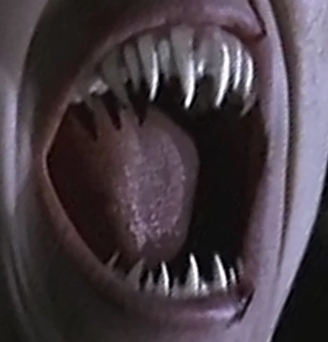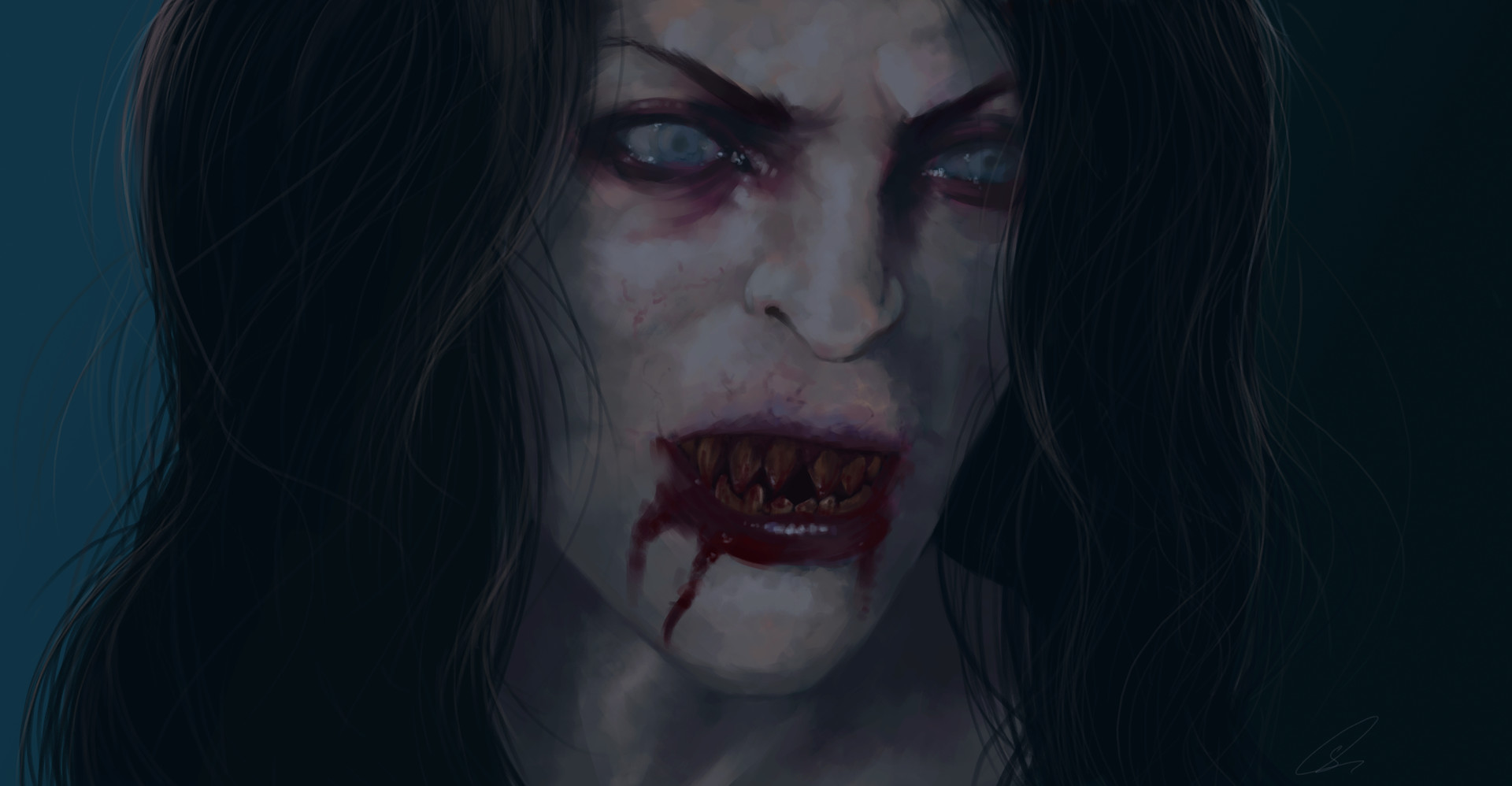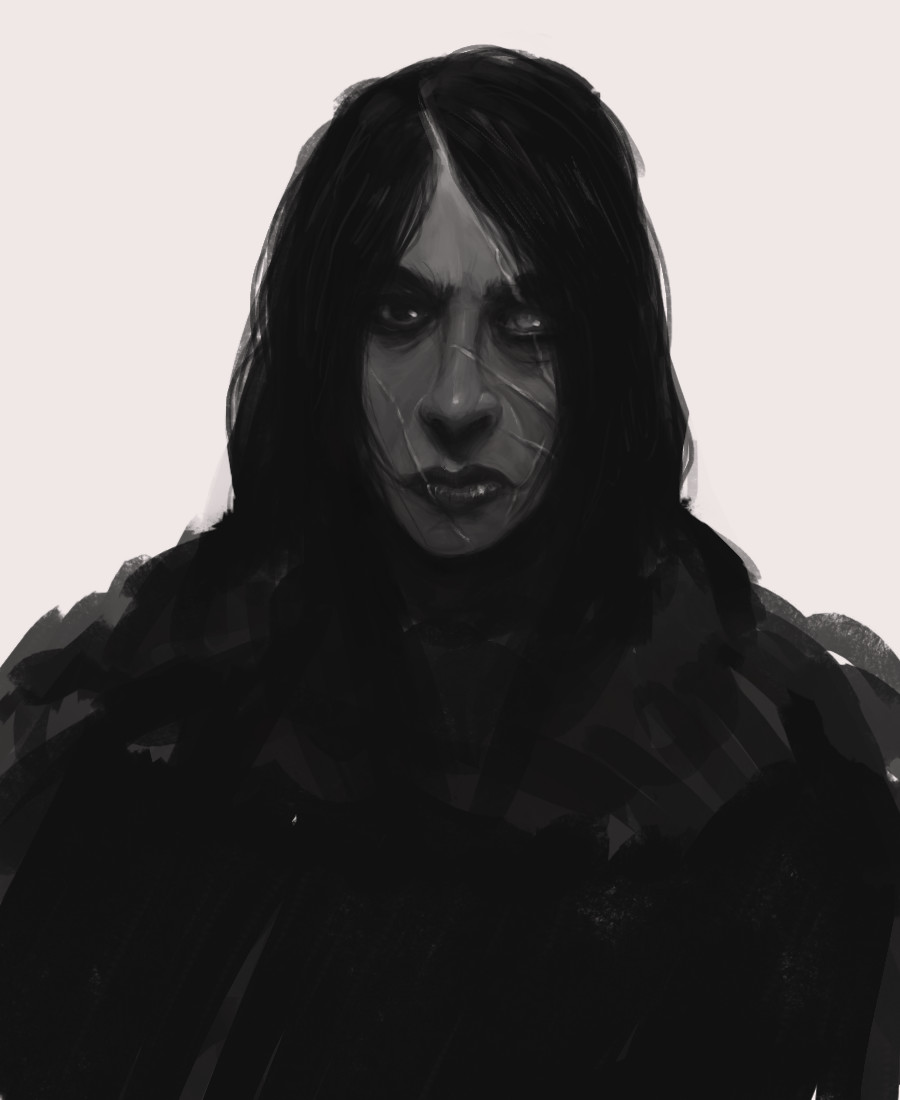Dhaeva
What was that thing? What in the hell have you people brought to this place?A strange amalgamation of undeath through both reanimation and viral infection, dhaeva was the name given to the species of creature created by Khabrayadhi scholars in Eshkaft. The knowledge of this creature spread eastward as well, where scholars at the University of Selby in Ardran gave it the westernized name "pulmora". Both terms see frequent use across Eletheros. Originally crafted for use as living war machines, controversy quickly arose surrounding pulmora due to their innate ferocity and ease of bloodlust, as well as the moral and ethical issues which surround all areas of necromancy and so-called 'black magics'. They saw limited use during the Andrasi civil war, but were otherwise infrequently created or applied in battles. The creation of pulmora is forbidden by the laws of most modern nations, and superstitions surrounding their existence are common among communities familiar with the creatures.
Biology
A pulmora is created, unlike any other known form of undead, through the combination of reanimation and infection through the nesuferi virus. The precise methods used are, respective to their own categories of undead, the flesh-binding magicss used to reanimate a revenant, the soul-binding magics used to form a wraith, and introduction of the haemophilic strand of the nesuferi virus which forms vampiric breeds. Necromantic magics are used to return life force into a corpse and to bind that corpse to the will of its reanimator, and the haemophilic strand of the strange nesuferi virus is then introduced into the body and is allowed to take host. This creates a being which is still bound to the will of its creator but possesses a great deal more independent thought that any simple reanimated corpse would be capable of, allowing the being to continue existing even if the connection to its bound master is severed. Due to the involvement of the nesuferi virus, only warm-blooded creatures may become pulmora and, similar to the vampiric or ghoulish breeds infected with the same strand of virus, must consume mammal's blood and flesh to survive, although these creatures suffer uniquely under the necessity that they keep a diet typical of their mortal races as well. Pulmora display many other physical similarities to vampires and ghouls alongside this, with common symptoms of haemophilic nesuferi between the two including the possibility of physical mutations towards more rodent-like features such as upturned noses, elongated ears, and lengthened canines as well as traits more common among infected undead in general such as a complete loss in body hair below the neck, paled skin, and semi-coagulated blood. Much like dhamphiri, pulmora possess a second set of teeth which retract into their upper and lower gums but can be extended at will. These razor sharp fangs are intended for shredding through flesh and muscle and are supplemented by a lengthy, prehensile tongue designed to collect spilled blood and chunks of meet, usually reaching anywhere from six inches to three feet in total length depending on the size of the afflicted. Unlike all other forms of physically reanimated undead, a pulmora is still quite able to feel and process pain of all sorts, though the creatures do seem to have a penchant for shrugging off heavier trauma mid-battle. Their natural abilities to heal and mend physical damage is much greater than an average kith's as well, though not nearly as advanced as a true vampire or ghoul's. As with those species, damage to skin caused by burning or acidic compounds slows or completely nullifies their supernatural healing factors in affected areas, and direct contact with pure iron or silver will have the same effect. While pulmora cannot regrow bones or lost limbs, they are able to re-attach large portions of their body through natural healing provided that the severed member has not suffered from too severe rot or infestation. Due to this, these creatures can be incredibly difficult to kill, their bodies able to regenerate themselves to a working condition long after their "death", letting them rise from seemingly mortal wounds if their bodies are not properly attended to. Decapitation was a common method of dispatching pulmora during the height of their usage, though theoretically a pulmora would still find themselves able to return to the living if their head were reunited with the rest of their body in proper time. Immolation, dismemberment with iron or silver, and complete decomposition of severed extremities have been the only recorded ways to permanently kill off this brand of undead.Abilities
The original intent of the pulmora's creation was to form a being with the positive qualities of its three component undead forms and without the negatives. To a certain extent, the venture was successful - pumora lack the physical weaknesses to sunlight found in nesuferi-infected undead, retain complete autonomy once freed from the bindings of their summoner unlike reanimated corpses, and have minor planeshifting qualities similar to spectral beings, but also lack many of the strongest qualities of all three undead types used to forge them. Pulmora are often similar in physical strenghth to their vampiric cousins due to the effects of reanimation and have comparable dexterity and reflexes. Alongside this, they possess excessively unnatural endurance and stamina greater than that of even the most well-conditioned of mortal kith. However they lack the talent for certain forms of black magics that higher vampires are seemingly naturally privy to. These creatures display massive increases in the effectiveness of their senses, able to detect scents like a hound and focus in on far away objects like a bird of prey. Unfortunately for them, this leaves them overly sensitive to loud noises and bright lights, both of which were tactics used to stun the creatures on the battlefield to leave them open for execution by decapitation.Bloodlust
"Bloodlust" or "blood drunk" is the moniker given to the state of mind often experienced by pulmora when they become lost in the carnage of battle. Thought to be a remnant of reanimation, as simple reanimated corpses are likely to mindlessly strive for the consumption of flesh if left without command, pulmora sometimes become too excited by the carnage of battle and begin reverting to an almost bestial sort of mindset, slowly turning into little more than feral animals. This state of mind often lasts until long after the battle has ended and can be incredibly dangerous for those fighting on the same side of the battle, lest the pulmora lose all distinction between friend and foe.Umbramancy
This particular set of strange magical abilities concerning the pulmora's ability to manipulate darkness near itself is what originally granted them the name "dhaeva", as the Sakkahrat researches who initially created this manner of creature compared these abilities to the servants of destruction and the world's undoing. Eletherosean scholars have documented the logic of this comparison as well, as this odd form of magic does seem similar to the kudlaka mentioned in many old religious texts. Using this ability, pulmora are able to temporarily enhance certain areas of their bodies, such as by enveloping their hands in shadowy claws or allowing them to climb sheer surfaces. Their already noteworthy physical strength and speed can be enhanced as well, though this is quite draining for the creatures - allowing them to dent steel armor with nothing more than their bare fists. Observers have noted that translucent black trails seem to follow the affected limbs when such a technique is employed. Pulmora seem to be able to employ this ability for something similar to temporary dematerialization, as well, though the limits of this ability are limited to the pulmora's own body and are heavily affected by it surroundings - researchers have noted, for example, that a pulmora cannot dematerialize while chained with cuffs or a pillory, for example, but can do so without trouble while being gripped by another human. It is theorized that these magics somehow differentiate between organic and inorganic material, and will not allow them to pass through the latter unless their physical body could in the first place. This semi-corporeal form seems to be quite draining to the creatures, and cannot be maintained for more than a few seconds at a time. They may similarly use this ability - or, at least, something resembling it - to mimic a spectre's ability to planeshift, instantly transporting themselves across the physical world, but only over very short distances, only within their visible line of sight, and their movement is restricted through physical and magical barriers. This ability has been jokingly dubbed "plane-hopping" by some scholars.Creation
Birthed by alchemists in the city of Eshkaft in the thirty first year of the third era (1331), the first pulmora was created entirely by accident when the resident scholars were attempting to delve into the different forms of undeath and see what might come of combining more than one of them. Carnephilic nesuferia was introduced to a reanimated test subject, though the only effect this seemed to have was causing the undead creature to begin consuming itself until it was no longer able. The much more rare haemophilic strand of the nesuferi virus was eventually found, contained, and brought to the researchers, however, and the results it provided when introduced to an undead test subject proved much more interesting. The subject seemed to mutate much in the same way a living person would when exposed to the virus, and eventually began displaying traits of both viral and reanimated undead, much to the joy of the scholars conducting the experiments. Further research and experimentation would expant upon these results, introducing the binding of magical and spiritual essence to the reanimated body and giving it somewhat wraithlike qualities. It wasn't until 1378 that pulmora saw widespread use on the battlefield. The previous year, the founding house of Andras had split in half over disputed claims towards the throne and a civil war was well underway. The western half of the country had begun losing ground rather quickly and, seeking desperate measures, negotiated with traders from across the bay in the hopes that they could purchase a host of Khabrayadhi pulmora for use in the war. The "mercenaries" were inexperienced in battle and had hardly been taught the basics of fighting, but their innate ferocity and heightened abilities made them deadly in the war all the same. It was here that the true horrors of these creations were put on display, and as many soldiers returned home speaking of the horrors they'd witnessed at the hands of the engineered undead, further experimentation along that line of research was heavily brought into question by the public and many governmental figures. Trials on differing methods of the creation of these creatures and the affects that they would have on reanimated bodies were still being run until they were officially put to rest in 1382, however, when an escaped pulmora became bloodlusted and ransacked through a decently-sized trading village, slaughtering the townsfolk and shredding through the inexperienced guardsmen.Culture
Pulmora have little concept of specific culture in the traditional sense purely due to the fact that they are so exceedingly rare. The culture surrounding pulmora is much more often forcibly pushed onto them than it is accepted and associated with, as their species gained a poor reputation after the horrors of the Andrasi civil war. If a pulmora is lucky enough to bear an appearance that is passable as kithlike in nature, they often simply lead lives as normal as are allowed. Some others, passable or not, choose to use their newfound abilities in undeath to work as sellswords, mercenaries, and bodyguards for people who have no hangups about hiring the unliving. Those who cannot pass as living and don't wish to delve into mercenary work are found on the very outskirts of society, shunned by many who think them an eventual threat to their livelihoods. After the establishment of the executioners in Pratan and the vicars in Haversham, pulmora living in central Eletheros often find themselves hunted by these elite groups, ever wary that any day could be their last.Basic Information
Anatomy
Tethered to the host's species
Genetics and Reproduction
The undead cannot reproduce






Comments